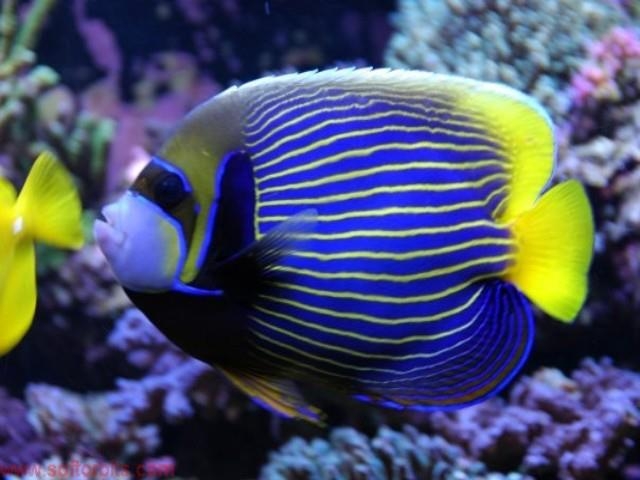Emperor Angelfish (Pomacanthus imperator) - Adult
Scientific Name : Pomacanthus imperator
Reef Compatible : With Caution
Care Level : Intermediate
Disposition : Semi-aggressive
Min. Tank Size : 100 gallons
Mature Size : 16 inches
Diet : Omnivore
Range : Coral Sea, Indo-Pacific, Maldives, Sri Lanka
Other Common Names
Imperator Angelfish
Description
The most striking of Angelfish, the Emperor Angelfish is probably in the top five list of most easily recognized marine animals in the hobby. Emperor Angelfish can often be poor acclimators and very shy, which lengthens the time it takes for them to accept a captive diet.
Because of this it is very important to provide plenty of live rock with sponge growth. Because the Emperor Angelfish is slow to accept captivity, the juveniles of this species are likely the best candidate for purchase. This fish is susceptible to a variety of parasites and proper quarantine procedures are highly recommended. If improper diet and/or parasitic infection occur, fish may likely loose color and contract lateral line erosion problems. The Juveniles of this species is colored very differently from the adults. The body of the juvenile is usually a deep, dark blue with white and lighter blue striping almost resembling a bulls eye appearance. The juveniles begin to change anywhere from 3 - 6 inches and may have an odd mottled appearance. The length of time it takes this change to occur can be as little as 4 months but as many as a year depending on diet, stress and individual specimen.
Most large angelfish are well known for nipping at large-polyped stony corals and some soft corals (e.g. Xenia) as well as tridacnid clam mantles. It is not considered reef safe though some specimens have been reported to live peacefully without harassing small-polyped stony corals and soft corals of a more 'noxious' nature.
Diet
Feed a varied diet of Spirulina and other marine algae. Include meaty marine based foods such as mysis shrimp, raw shrimp, and commercially prepared angelfish formulas. It is often said that when juveniles change to their adult coloration, they are never quite as vibrant as when they change color in the wild. Because of this, it is also recommended to also offer vitamin enriched foods that enhance color.



Recommended Comments
There are no comments to display.
Join the conversation
You can post now and register later. If you have an account, sign in now to post with your account.